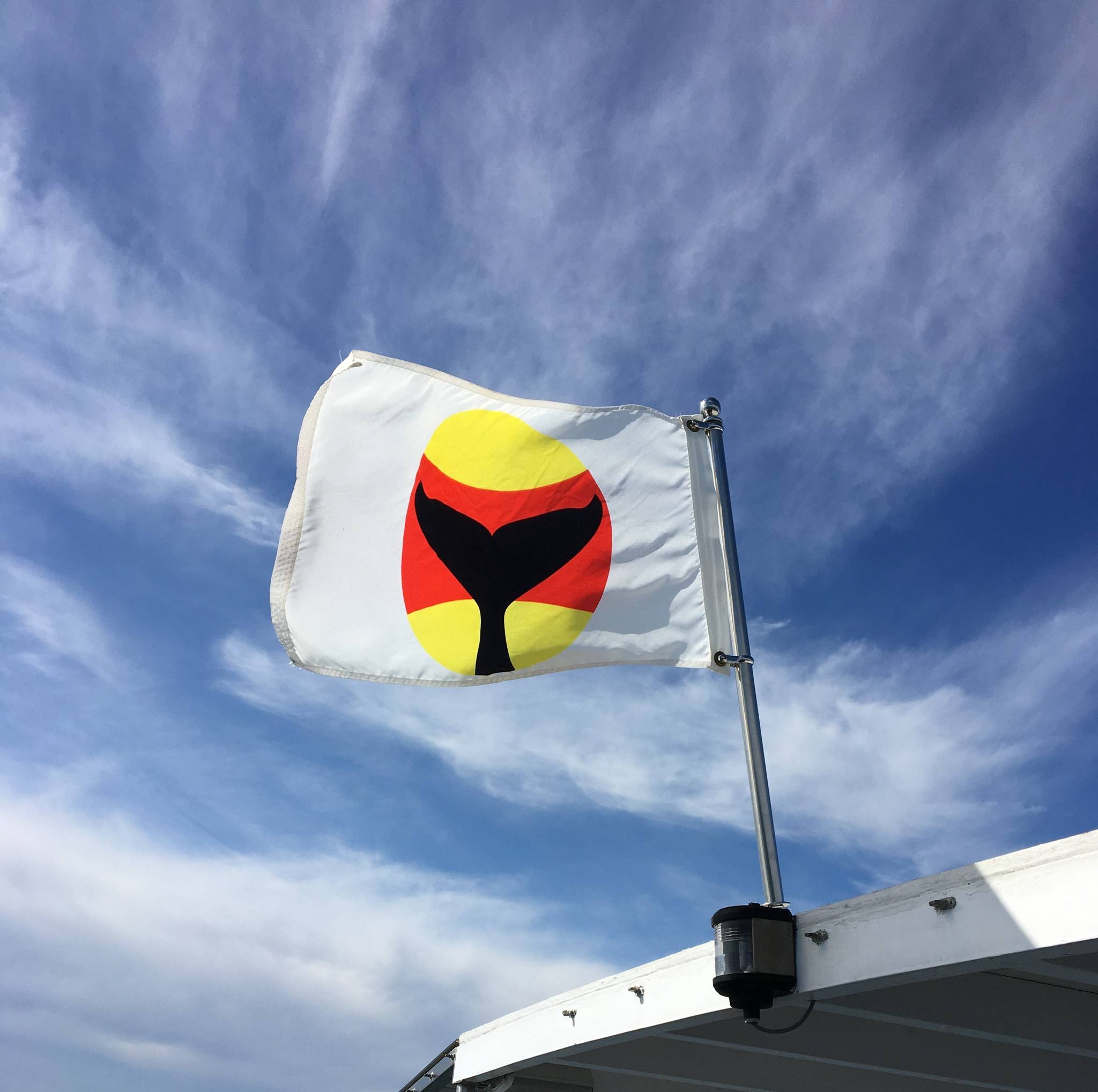Submitted by The San Juan County Environmental Department.
Across the region, homes and businesses will soon be displaying the Stars and Stripes to herald the Fourth of July holiday. Meanwhile, on the waters of the Salish Sea, another flag can be spotted – the whale warning flag. The Fourth of July holiday weekend marks one of the busiest times of the year for boating in Puget Sound, and San Juan County’s Environmental Department is urging all boaters to join the effort to keep whales and boaters safe by watching for and using a whale warning flag.
Much like the recognizable “diver down” flag, the whale warning flag’s purpose is to alert boaters when there are whales in the area. Commonly seen on whale watch boats and research vessels, private boaters may also display a whale warning flag to alert fellow boaters to whales in the area.
Using the flag is simple: simply run it up your rigging, zip tie it to a pole to deploy from the railing, or use suction cups that stick to flat surfaces. When you spot whales, or other boats grouped together already flying whale warning flags, slow down and take a moment to figure out where the whales are relative to you. Then, put up your whale warning flag and spread the word.
Keep the flag up while the whales are within a half-mile of you, and maintain compliance with whale protection laws and guidelines by doing the following:
– Slow down to 7 knots or less
– Turn off fish finders and/or depth sounders
– Maintain a minimum distance of 300 yards from their sides and 400 yards from their path of travel in either direction
– Avoid cutting in front or following behind whales if it can be avoided
The waters of Puget Sound are critical habitats for the endangered Southern Resident Killer Whales, who are highly impacted by vessel disturbances. “Boaters in the Pacific Northwest can play a huge role in the recovery of the Southern Residents by doing their part and helping to protect not just these whales but all of our marine wildlife and resources,” says Alanna Frayne, Soundwatch & Be Whale Wise Program Coordinator at The Whale Museum. “One of the best ways for boaters to help is to be proactive and familiarize themselves with the regulations and guidelines before getting underway. One of the biggest concerns with recreational boaters is excessive speed (over 7 knots) when in the vicinity of Southern Residents. The Whale Warning flag is a tool used to alert boaters to the presence of whales, so when you see the flag you’ll know to slow down and keep a sharp lookout!”
Join the community effort to protect both whales and boaters by always keeping an eye out for the whale warning flag flying, and by obtaining one of your own at www.WhaleFlag.org. Review the regulations and learn about best practices by watching our new instructional video: Boating with Whales in the Salish Sea – What You Need to Know, at https://youtu.be/WySYdl3gxk8.
And remember to always be whale-wise and let your flag fly!




